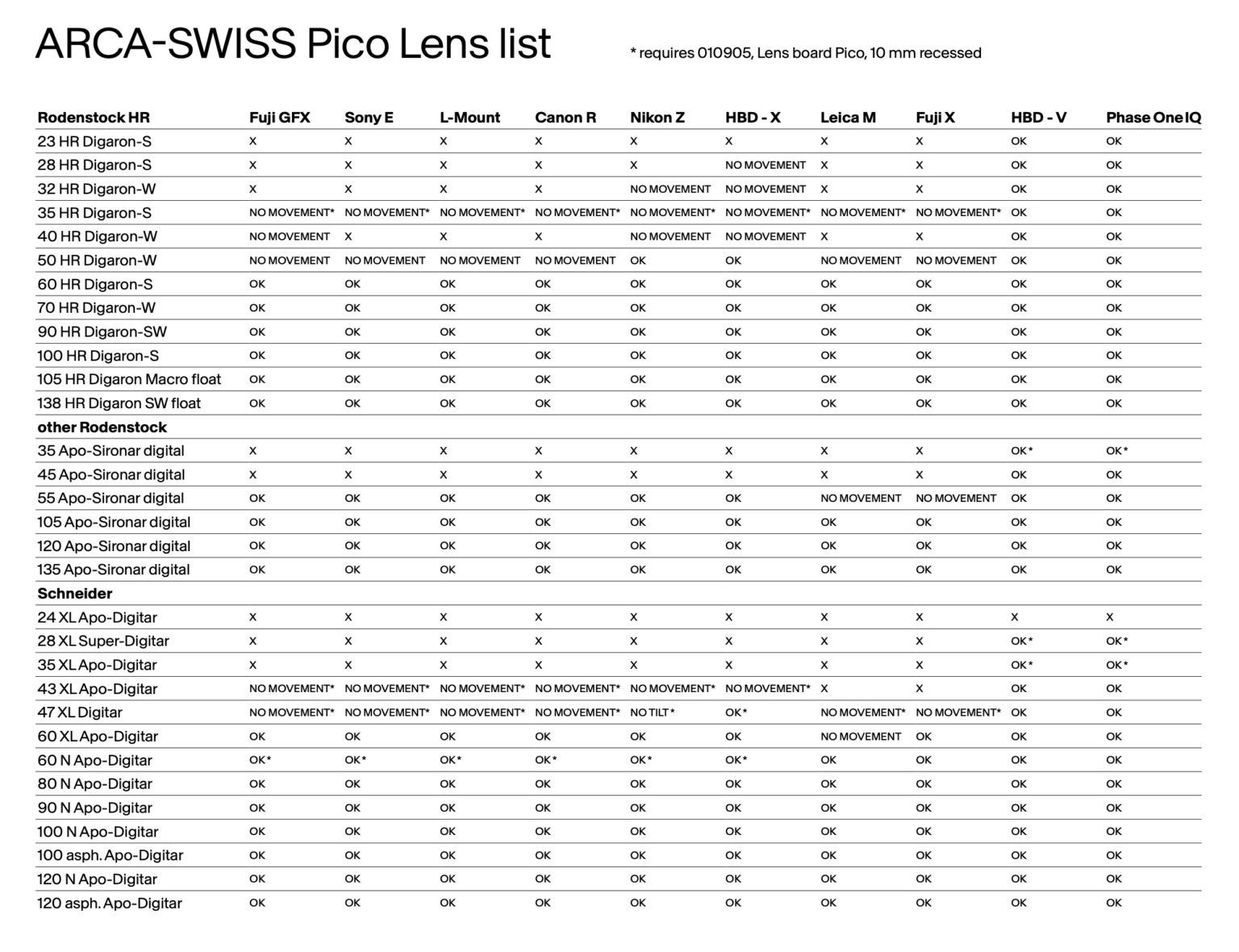Doppler9000
Well-known member
No surprises.


Last edited:
Great to see you here. Join our insightful photographic forum today and start tapping into a huge wealth of photographic knowledge. Completing our simple registration process will allow you to gain access to exclusive content, add your own topics and posts, share your work and connect with other members through your own private inbox! And don’t forget to say hi!

Could you please elaborate?Well-known flange distance issue.
You are right to point out that the key point is the digital back type; my understanding has been that camera manufacturers strive to open up their systems to DB alternatives because people literally are priced out with P1 back pricing.Doesn't seem any different to any other bellows camera adapted to mirrorless. Pancake with a DB doesn't have those limitations just as the Pico with a DB doesn't have those limitations.
Victor B.
Thank you.Cameras, in contrast to digital backs, are generally mounted using their bayonet mounts. To simplify explanation: Not enough space for the rear lens element to come close enough to the sensor (for having focus at infinity).
Another advantage of the Pico (or Actus, etc.) is for people who want to use lenses that aren’t conducive to fitting into factory helicoids.They chose rigid design over wide angle compatibility. In my view a non starter to exclude low end options.
Only reason to get it is geared movements, for macro it’s cool. But for most use cases IMHO the R is already perfect …
Rm3Di and done.
The Pico does not use a Rotafoot type mount. It has a mount style similar to Cambo but much sturdier and is made out of very thick aluminum. I can't imagine it ever flexing. The 35XL (not the lens you are describing) requires a recessed lens board which I tried for a very brief period of time. To me it was extremely difficult to adjust the aperture which I had relegated to my little finger. I won't be shooting the 35XL on the Pico. It and the 180T will be used on my M-Two.Officially the APO-Digitar 35/5.6 is not compatible with the F-Universalis and GFX cameras. However, it is if you are OK with 8mm maximum shift. The rear element is tiny and fits inside the mount without issue.
You should not assume this is also true with the Pico. It uses what looks like a Rotafoot mount, so there should be the same amount of room for the rear of the lens to move within the available space. However, it's quite possible that the thicker front standard may prevent the lens from reaching infinity.
The Pico is very rigid with tolerances closer than any camera I have ever owned. Anything that is adjusted stays there until changed by the user.Victor - thanks for the insights.
How are the rigidity and return-to-zero of the Pico vs the Actus?
Thanks, Victor.The Pico is very rigid with tolerances closer than any camera I have ever owned. Anything that is adjusted stays there until changed by the user.
By return to Zero I'm assuming you mean swing and tilt. They both return to a detent zero but the only one that I do not adjust is tilt. Mostly because all of my lenses are really in the ballpark for '0' for that particular movement. Absolute zero for tilt isn't as critical for me as absolute Zero for swing is. The tilt mechanism is very robust and actually holds my 138 float without sag.
Nudge adjustments for swing are necessary for every lens just as with any other bellows camera I have used. This is a movement that is very critical for me as I don't want any skew. The real difference between the Actus and the Pico is that a tiny/nudge swing adjustment stays there. Not so on the Actus where a slight touch of the knob will affect the movement.
The difference between the two cameras is very significant.
Victor B.
I think you misread me. I believe the Pico is everything you say it is, and is a worthy purchase.I could hang out some dirty laundry but that's true of anything. The camera is a significant improvement over anything else I have used outside of the M-Two. The M-Two just happens to be a solid 2 pounds heavier which puts it behind the Pico for me.
The Pico, for sure, is a true travel camera..
Victor B.
